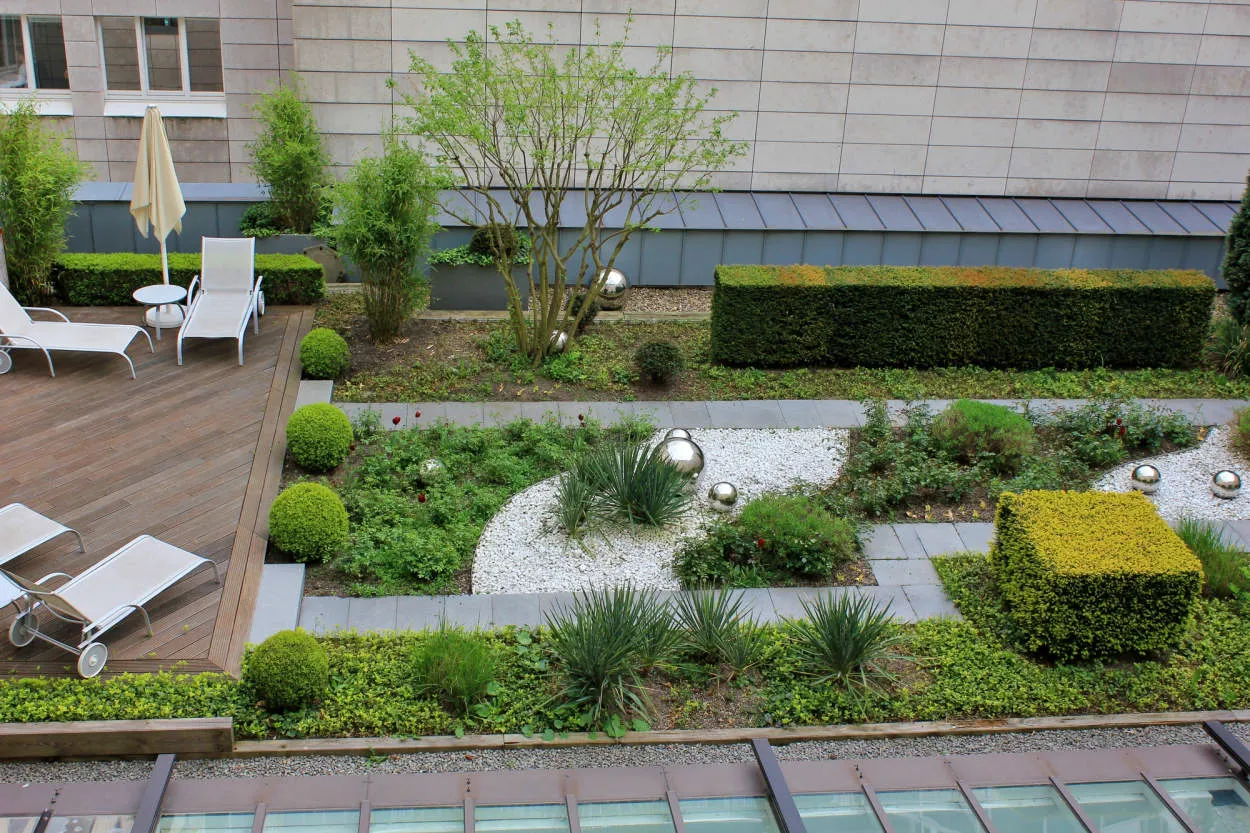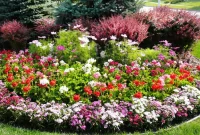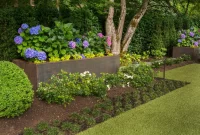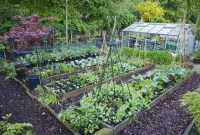Urban Gardening: Creating a Green Space in the City
Challenges of Urban Gardening
Urban gardening, the practice of growing plants and crops in urban areas, presents several unique challenges. The following are some of the obstacles that urban gardeners often encounter:
-
Limited space:
One of the main challenges of urban gardening is the limited space available for planting. In densely populated cities, finding enough area for a garden can be a struggle. This limitation often requires gardeners to be creative and make the most of vertical spaces, such as walls or rooftops, to maximize their planting area.
-
Poor soil quality:
Urban areas often have soil that is contaminated or lacking in nutrients. This can make it difficult for plants to thrive. Gardeners may need to improve the soil by using compost or purchasing nutrient-rich soil to provide an optimal growing environment for their plants.
-
Access to sunlight:
Tall buildings and limited open spaces in cities can block sunlight from reaching urban gardens. Without adequate sunlight, plants may struggle to grow and produce healthy yields. Gardeners must carefully select the right plants that are tolerant of shade or consider alternative options such as installing artificial lighting.
-
Pest and disease management:
Dense urban environments can attract a variety of pests and diseases that can harm plants. Gardeners may need to implement effective pest management strategies, such as using organic pesticides or companion planting techniques, to protect their plants from damage.
-
Water availability:
In urban settings, water sources for gardening may be limited, particularly during drought periods. Gardeners must be mindful of water conservation and choose plants that are drought-tolerant or use efficient irrigation techniques to ensure their gardens receive adequate moisture.
-
Community engagement:
Urban gardening can face challenges related to community involvement. In some cases, lack of interest or support from the local community may arise, making it harder to sustain and maintain urban garden projects. Building strong relationships with neighbors and organizing community events can help foster a sense of ownership and involvement in urban gardening initiatives.
In spite of these challenges, urban gardening provides numerous benefits, such as improving air quality, reducing food miles, promoting biodiversity, and enhancing the aesthetics of cities. With proper planning, innovation, and determination, these obstacles can be overcome, allowing urban gardening to flourish and create green spaces in our cities.
Solutions for Small Urban Spaces
In today’s fast-growing cities, it can be challenging to find green spaces for relaxation and connection with nature. However, with the rise of urban gardening, creating a green space in the city has become more attainable than ever.
Urban gardening offers a range of solutions for small urban spaces. One popular method is vertical gardening, where plants are grown on walls or stacked containers. This innovative technique maximizes space utilization, allowing individuals to cultivate plants even in limited areas.
Another solution is container gardening. By using pots or containers, individuals can grow a variety of plants, including vegetables and herbs, on their balconies or rooftops. Container gardening is not only space-efficient but also adds an aesthetic value to urban environments.
For those with access to communal spaces, community gardens provide a wonderful solution. These shared gardens, either rooftop or ground-level, allow urban dwellers to come together and grow their own food. They foster a sense of community and teamwork while promoting sustainable practices.
Furthermore, hydroponics is gaining popularity in urban gardening. This method involves growing plants in a nutrient-rich water solution without soil. Hydroponics not only saves space but also conserves water resources, making it an eco-friendly choice for small urban spaces.
Lastly, green rooftops offer an excellent solution for limited outdoor areas. By transforming rooftops into green spaces, urbanites can enjoy a peaceful environment while reducing heat absorption and improving air quality in the city.
In conclusion, urban gardening provides numerous solutions for creating green spaces in small urban areas. Whether through vertical gardening, container gardening, community gardens, hydroponics, or green rooftops, individuals can bring nature closer to their daily lives and enjoy the benefits of a greener, more sustainable city.
Selecting Plants for Urban Conditions
When it comes to urban gardening, choosing the right plants is crucial for success. The unique environment of the city poses a challenge for plants to thrive. Therefore, careful consideration must be given to the selection of plants that can adapt to urban conditions.
1. Consider the Climate
Urban areas often have a microclimate that differs from surrounding rural areas. Factors such as concrete and asphalt can create a heat island effect, leading to higher temperatures. Therefore, it is important to choose plants that can tolerate heat and are suitable for your specific climate.
2. Assess Available Space
Space is a premium in urban settings, so selecting plants that are compact is essential. Look for varieties that have a smaller footprint or can be grown vertically, such as climbing plants or those that can be trained along walls or trellises. Utilizing hanging baskets or vertical gardening techniques can also maximize your available space.
3. Determine Sunlight Levels
Most urban gardens face the challenge of limited sunlight due to tall buildings and shading from nearby structures. Assess the amount of sunlight your garden receives throughout the day and choose plants accordingly. Opt for shade-loving plants for areas with little direct sunlight, while sun-loving varieties can thrive in spots bathed in sunlight.
4. Consider Air Pollution
Urban areas are often plagued with higher levels of air pollution caused by traffic and industrial activities. Select plants that are known to be more tolerant of these conditions, such as ferns, palms, or certain types of evergreens. These plants have a better chance of filtering pollutants and improving air quality in your urban garden.
5. Choose Low-Maintenance Varieties
Given the fast-paced urban lifestyle, it’s wise to opt for low-maintenance plants. Look for varieties that require less water, are pest-resistant, and can withstand occasional neglect. Drought-tolerant plants like succulents or native plants are excellent choices for urban gardens.
By carefully selecting plants that can adapt to urban conditions, you can create a thriving green space in the midst of the city. Consider the climate, assess your available space, determine sunlight levels, factor in air pollution, and choose low-maintenance varieties. With these considerations in mind, you can enjoy the beauty and benefits of urban gardening.
Balcony and Rooftop Gardening Tips
Urban gardening has become a popular trend among city dwellers who want to add a touch of greenery to their surroundings. Balcony and rooftop gardens offer the perfect solution for those who have limited space but still want to enjoy the benefits of gardening. Here are some useful tips to create and maintain a thriving garden in an urban setting:
1. Choose the Right Plants
When selecting plants for your balcony or rooftop garden, opt for those that thrive well in containers and have a compact growth habit. Some popular choices include herbs, flowers, small vegetables, and succulents. Consider the amount of sunlight your space receives and choose plants accordingly.
2. Plan and Optimize Space
Prioritize your space by planning and organizing it efficiently. Use vertical gardening techniques such as hanging baskets, trellises, or wall-mounted planters to utilize vertical space. Group plants with similar watering and sunlight requirements together to optimize care and growth.
3. Ensure Proper Drainage
Proper drainage is crucial to prevent waterlogging and root rot. Use containers with drainage holes or add a layer of pebbles at the bottom to ensure water flows freely. Additionally, consider using a moisture-absorbing material such as a coconut coir liner to retain moisture and prevent excessive evaporation.
4. Provide Adequate Water and nutrients
Regular watering is essential for the health of your plants. Balcony and rooftop gardens, especially those exposed to direct sunlight, tend to dry out quickly. Install a drip irrigation system or self-watering pots to provide consistent moisture. Additionally, fertilize your plants regularly using organic fertilizers to ensure they receive the necessary nutrients.
5. Protect from Extreme Conditions
Rooftop and balcony gardens are more exposed to harsh weather conditions such as strong winds and extreme temperatures. Protect your plants by providing adequate shade during scorching summers or using windbreaks to shield them from strong winds. Consider using frost protection blankets or moving sensitive plants indoors during winter months.
6. Regular Maintenance
Keep your balcony or rooftop garden well-maintained by regularly pruning, weeding, and monitoring for pests and diseases. Remove dead leaves or flowers to encourage new growth. Pay attention to the overall health of your plants and take necessary measures promptly to ensure a thriving garden.
Creating a green space in the city is not only aesthetically pleasing but also contributes to a healthier and more sustainable environment. By following these practical tips, you can successfully embrace urban gardening and enjoy the beauty of nature right at your doorstep.
Conclusion
Urban gardening is a valuable solution for creating green spaces in cities. It provides numerous benefits, including improved air quality, enhanced mental well-being, and increased access to fresh, organic produce. By utilizing innovative gardening techniques and utilizing available urban spaces, individuals can contribute to a more sustainable and greener urban environment.







